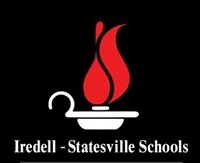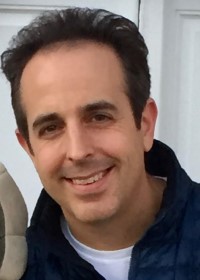
BY BLAKE PALMER
The Iredell-Statesville Schools Board of Education is currently engaged in a redistricting effort with the goal of passing a new district map by November 1. The Board has opted for a “clean slate” approach, which, as it sounds, will wipe the county map clean without consideration for the currently drawn districts. While there may be a time and circumstances for such an approach, this is not that time — and these are not those circumstances. We are in the midst of a pandemic, the Board is dealing with significant issues related to the pandemic, and the candidate filing deadline for 2022 is a mere two months away. Simply put, the proposed redistricting maps are too drastic of a change with too little time to appreciate the confusing and consequential ramifications.
 As an initial matter, there were three alternate maps introduced to the Board at its September 29 meeting. One of these maps (designated as alternate map 1) was summarily eliminated by the Board. In fact, one Board member, Charles Kelly, saw little need to present the voters of this county with more than one map to consider. Nevertheless, the result was that there would be two alternate maps proposed by the Board for public comment. Both maps turn the current districts upside down. By wiping the slate clean, the alternate maps have relocated entire districts.
As an initial matter, there were three alternate maps introduced to the Board at its September 29 meeting. One of these maps (designated as alternate map 1) was summarily eliminated by the Board. In fact, one Board member, Charles Kelly, saw little need to present the voters of this county with more than one map to consider. Nevertheless, the result was that there would be two alternate maps proposed by the Board for public comment. Both maps turn the current districts upside down. By wiping the slate clean, the alternate maps have relocated entire districts.
For example, alternate map 2 drastically changes districts 2, 3, 4, and 5. These districts become unrecognizable from their current state. Not to be outdone, alternate map 3 is even more extreme, with virtually each numbered district covering a vastly different geographic footprint than it currently covers. The most obvious effect of this will be enormous confusion among voters of Iredell County. The filing deadline for candidates to run for local office is December 17; yet Iredell County voters who, as of now, believe they will be voting to elect a Board member are very likely to be stripped of this opportunity in the upcoming election as a result of this re-districting. Likewise, candidates who had planned on running for the Board in a particular district will now find themselves without such an opportunity. Conversely, voters who were not expecting to vote or run for office next year; and therefore may not have been politically engaged will now have a few short weeks to become aware of the redistricting changes, the associated consequences, and be forced to make a hasty determination as to whether they would like to run for office.
As an example, look no further than the dichotomy of districts 4 and 5 in alternate map 2. As it currently stands, the voters of district 5 will be voting to elect a Board member next year. However, under alternate map 2, much of what is now district 5 becomes district 4. The Board member from district 4 is not up for re-election until 2024. Thus, voters currently in district 5 who think they will have a vote in next year’s election will not vote until 2024 under this new map. Same thing on alternate map 3, where district 6 (no member up for re-election until 2024) replaces most of district 5 (which does have a member up for re-election). This approach is indefensible. It will cause confusion among voters as to which voting district they reside in and whether that new district has a Board member that is up for election. It will even result, as the Board’s attorney admitted during the September 29 meeting, in certain districts having two Board members serving concurrently.
This, of course, is not a fair or wise approach. The Board chairman rationalized this “clean slate” approach during the September 29 meeting by saying you can only fix a car so many times before you need to buy a new one. What’s not clear is why the current map is irretrievably broken. Why have the voters not — at the very least — been presented with options that keep the core of the current districts intact, while making only the necessary changes to bring the districts into compliance with the one-person/one-vote principle? The Board has not answered these questions. When it comes to such a drastic altering of the County’s voting districts, the voters deserve answers to these questions.
A much more sensible approach would be to use the software employed by the Board and/or its attorneys to develop new mapping options that hold the core of the current districts together. The boundaries of these districts would need to change in order to assure compliance with the one-person/one-vote principle. However, the boundary changes to each district are likely to be far less disturbing to the physical map and voters’ understanding of their voting/candidacy options than the alternate maps currently under consideration.
Voters in this district, as with those elsewhere, continue to battle the difficulties brought on by the pandemic. Disagreements over masking, quarantining, difficulty finding childcare and sickness from COVID-19 are just a few of many hardships facing voters in this County. Needless to say, redistricting is not at the forefront of those critical day-to-day issues on the minds of voters. It is therefore curious why the Board would attempt such a dramatic redistricting effort by introducing alternate maps on September 29 and scheduling a meeting for public comment a mere five days later. Advance notice for both meetings was not meaningful. Board members highlighted the importance of a transparent re-districting process at the September 29 meeting. Does this rushed process have the face of transparency?
The good news is that this problem is fixable, and the solution is evident. The Board should eliminate the “clean slate” approach and prepare mapping options that preserve the core of the current districts. The software used to redraw the maps should be able to do this quickly, and the public can then be given the opportunity for public comment. The result is simple, less confusing, less disruptive to voters and candidates, provides more time for the public to review and understand the re-districting process, and offers a less dramatic approach on an issue in a time that implores subtlety. To the extent this requires a short delay in passing a new plan and/or of the filing deadline for candidates, fairness warrants it.
Blake Palmer is a resident of Mooresville and the parent of an Iredell-Statesville Schools student.



